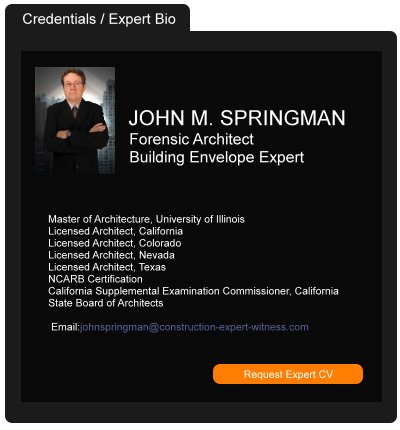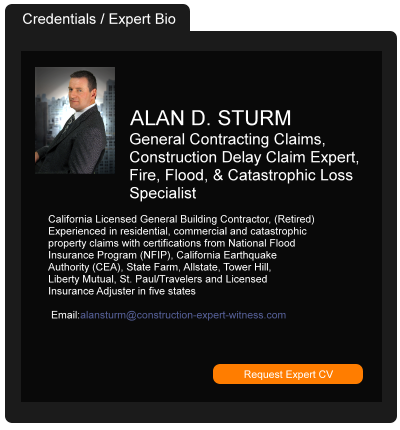In Florida, Exculpatory Clauses Do Not Need Express Language Referring to the Exculpated Party's Negligence
October 02, 2015 —
Edward Jaeger & William Doerler – White and Williams LLPIn Sanislo v. Give Kids the World, Inc., 157 So.3d 256 (Fla. 2015), the Supreme Court of Florida considered whether a party to a contract, in order to be released from liability for its own negligence, needs to include an express reference to negligence in an exculpatory clause. The court held that, unlike an indemnification clause, so long as the language in an exculpatory clause is clear, the absence of the terms “negligence” or “negligent acts” in an exculpatory clause does not, for that reason alone, render the exculpatory clause ineffective.
Background
Give Kids the World, Inc. (“GKW”) is a non-profit organization that provides free vacations to seriously ill children and their families at GKW’s resort village. To use the resort, vacationers have to fill out an application. Stacy and Eric Sanislo filled out an application to bring their seriously ill child to the village for a vacation and GKW accepted their application. Upon arriving at the resort, the Sanislos filled out a liability release form.
Reprinted courtesy of
Edward Jaeger, White and Williams LLP and
William Doerler, White and Williams LLP
Mr. Jaeger may be contacted at jaegere@whiteandwilliams.com
Mr. Doerler may be contacted at doerlerw@whiteandwilliams.com
Read the court decisionRead the full story...Reprinted courtesy of
Illinois Supreme Court Rules Labor Costs Not Depreciated to Determine Actual Cash Value
November 19, 2021 —
Tred R. Eyerly - Insurance Law HawaiiThe Illinois Supreme Court determined that a homeowner insurer may not depreciate labor costs in calculating actual cash value (ACV) after a loss under the policy. Sproull v. State Farm Fire and Casualty Co., 2021 Ill. LEXIS 619 (Ill. Sept. 23, 2021).
Plaintiff was insured under a homeowner's policy that provided replacement cost coverage for structural damage. Under the policy, the insured would initially receive an ACV payment but then could receive replacement cost value (RCV) if repairs or replacement were completed within two years and the insurer was timely notified. The policy did not define "actual cash value."
Plaintiff suffered wind damage to his residence and timely submitted a property damage claim to State Farm. The adjuster determined that the building sustained a loss with RCV of $1711.54. In calculating ACV, State Farm began with the RCV and then subtracted plaintiff's $1000 deductible and an additional $394.36, including taxes, for depreciation. Plaintiff thus received an ACV payment of $317.18. Plaintiff claimed that he was underpaid on his ACV claim because State Farm depreciated labor, which is intangible and thus not subject to wear, tear, and obsolescence. Further, labor should not have been depreciated because it was not susceptible to aging or wearing and its value did not diminish over time.
Read the court decisionRead the full story...Reprinted courtesy of
Tred R. Eyerly, Damon Key Leong Kupchak HastertMr. Eyerly may be contacted at
te@hawaiilawyer.com
Fine Art Losses – “Canvas” the Subrogation Landscape
February 26, 2024 —
William L. Doerler - The Subrogation StrategistIf a fire or flood destroys a high-net-worth client’s fine art collection, an insurer who pays out a claim related to the loss has an incentive to pursue subrogation. This article explores some of the issues an insurer should “canvas” before pursuing subrogation for these types of claims.
Damage to fine art can occur in a number of ways. For instance, fine art may be damaged in a natural disaster – such as a flood or a wildfire. Artwork may also be accidentally damaged because of a transportation-related incident physically damaging the art. In addition, artwork may suffer fire or smoke damage from a fire within a building. Another possibility is that the artwork suffers damage because of renovations either to the insured’s home or a neighboring property. For example, a renovation contractor may damage artwork due to vibrations or leaking water. A construction worker, moreover, may turn with a tool in his hand, or trip and fall, damaging the artwork.
Read the court decisionRead the full story...Reprinted courtesy of
William L. Doerler, White and Williams LLPMr. Doerler may be contacted at
doerlerw@whiteandwilliams.com
Homebuyers Get Break as Loan Rates Defy Fed Tapering: Mortgages
February 14, 2014 —
Kathleen M. Howley – BloombergAshley Underwood is taking advantage of the unexpected drop in mortgage rates by rushing to buy her first home before they go up again.
“I’m ready to cancel plans at a moment’s notice to go look at a house,” said Underwood, 27, who lives in Indianapolis, Indiana. “I didn’t expect to see rates falling again, and I want to lock in something before I lose out.”
The drop in the last month proved forecasters wrong, said Douglas Duncan, chief economist of Fannie Mae in Washington. After the Federal Reserve announced in December that it would begin tapering purchases of mortgage-backed securities, all the major housing forecasters said rates would jump this quarter. Economists didn’t foresee that investors would react to the Fed’s retreat by moving money from emerging markets into U.S. Treasuries, driving down home-loan rates.
Read the court decisionRead the full story...Reprinted courtesy of
Kathleen M. Howley, BloombergMs. Howley may be contacted at
kmhowley@bloomberg.net
NIBS Consultative Council Issues Moving Forward Report on Healthy Buildings
July 25, 2021 —
National Institute of Building Sciences(WASHINGTON, DC, July 13, 2021) – The
National Institute of Building Sciences Consultative Council has issued its
2020 Moving Forward Report, looking closely at the importance of healthy buildings.
The report examines how buildings can protect and promote public health, providing recommendations for President Biden and policymakers on three components of healthy buildings: indoor environmental quality, the importance of design in promoting health, and promoting knowledge transfer between building owners and public health officials.
“Ensuring that the spaces where we live and work are healthy and safe for continued occupancy is critical to overcoming the pandemic,” said Lakisha A. Woods, CAE, President and CEO of NIBS. “This is a fundamental pillar of public health and community resilience. The concept of healthy buildings goes well beyond continual sanitation of a building’s indoor environment to eliminate pathogens.”
About NIBS
National Institute of Building Sciences brings together labor and consumer interests, government representatives, regulatory agencies, and members of the building industry to identify and resolve problems and potential problems around the construction of housing and commercial buildings. NIBS is a nonprofit, non-governmental organization. It was established by Congress in 1974. For more information, visit nibs.org or follow @bldgsciences on Twitter and Facebook.
Read the court decisionRead the full story...Reprinted courtesy of
NTSB Outlines Pittsburgh Bridge Structure Specifics, Finding Collapse Cause Will Take Months
February 21, 2022 —
Tom Ichniowski - Engineering News-RecordOfficials in Pennsylvania are moving forward on building a replacement for the Fern Hollow Bridge in Pittsburgh, which collapsed on Jan. 28, selecting a team of HDR Inc. and Swank Construction to design and construct the new structure, and the approval of $25.3 million in federal funds for the project.
Reprinted courtesy of
Tom Ichniowski, Engineering News-Record
Mr. Ichniowski may be contacted at ichniowskit@enr.com
Read the full story... Read the court decisionRead the full story...Reprinted courtesy of
Milwaukee's 25-Story Ascent Stacks Up as Tall Timber Role Model
January 25, 2021 —
Nadine M. Post - Engineering News-RecordIn January 2019, Preston Cole left his post as Commissioner of the Milwaukee Dept. of Neighborhood Services and became Secretary of Wisconsin’s Dept. of Natural Resources. It was a step up for the 25-year veteran of public service—a forester by profession—who as the city’s top building official had reformed DNS by fostering a developer-friendly environment.
Reprinted courtesy of
Nadine M. Post, Engineering News-Record
Ms. Post may be contacted at postn@enr.com
Read the full story...
Read the court decisionRead the full story...Reprinted courtesy of
An Obligation to Provide Notice and an Opportunity to Cure May not End after Termination, and Why an Early Offer of Settlement Should Be Considered on Public Works Contracts
August 17, 2020 —
Jeff Kaatz - Ahlers Cressman & SleightIn 2015, the City of Puyallup (“City”) and Conway Construction Company (“Conway”) executed a public works contract for road improvements (“Project”). On March 9, 2016, approximately four months after work started on the Project, the City issued Conway a notice of suspension and breach of contract and identified nine defective and uncorrected work and safety concerns. Conway denied any wrongdoing, and on March 25, 2016, the City issued a notice of termination for default and withheld payments due to Conway.
Conway subsequently filed suit in Pierce County Superior Court and alleged the City’s termination for default breached the contract and sought a determination that the City’s termination for default was improper and should be deemed a termination for convenience. Conway sought approximately $1.25 million in damages and recovery of its attorney fees and costs. Following a bench trial, the Trial Court found the City breached the contract and awarded Conway damages, attorney fees, and costs. The City appealed.[1]
On appeal, after affirming the trial court’s determination that the City improperly terminated Conway, the Court of Appeals considered two other issues raised by the City. First, whether the City was entitled to a set-off for replacing defective work discovered after Conway was terminated. Second, whether Conway is entitled to attorney fees if it did not make the statutorily required offer of settlement per RCW 39.04.240.
Read the court decisionRead the full story...Reprinted courtesy of
Jeff Kaatz, Ahlers Cressman & SleightMr. Kaatz may be contacted at
Jeff.Kaatz@acslawyers.com


































































